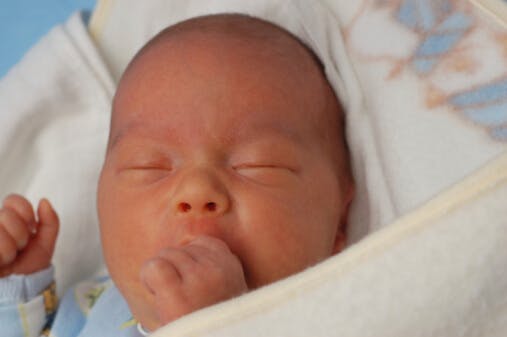Thrush: A-to-Z Guide from Diagnosis to Treatment to Prevention

Introduction to thrush:
Wordsworth says that we come into this world “trailing clouds of glory.” We also come trailing hosts of microorganisms, sometimes including thrush. Even before an infant has completed her trip through the birth canal, she is already being introduced to the complex interplay of different species of life.
What is it?
Thrush, or oral pseudomembranous candidiasis, is a superficial yeast infection that is found in about 5 percent of healthy newborns.
Who gets it?
Infants usually acquire the yeast from their mothers during passage through the birth canal. The yeast is more apt to remain in those infants who abrade the lining of the mouth with prolonged sucking (such as babies who sleep with a bottle or pacifier). Visible thrush begins to develop 7 to 10 days after birth. The use of oral antibiotics, especially during the first year of life, can lead to recurrent or persistent thrush.
Immune deficiencies or systemic illnesses can also lead to chronic thrush.
What are the symptoms?
The lesions of thrush are white (or sometimes gray) plaques found on the insides of the cheeks, the lips, the tongue, or the palate. If the only symptom is a uniformly white tongue, it isn’t thrush. The plaques of thrush are often described as curd-like. Unlike milk residue, they adhere to the underlying tissue.
Thrush lesions can be quite painful for some children, leading to fussiness and decreased feeding. For other children, there appears to be no discomfort at all. Either way, the yeast sometimes passes through the gastrointestinal system and causes a yeast diaper rash on the other end.
Is thrush contagious?
The yeast that causes thrush can pass back and forth between the baby’s mouth and the mother’s breast, or any artificial nipple.
How long does it last?
In otherwise healthy children, thrush is a self-limited condition, usually resolving within a month from its first appearance without treatment.
How is it diagnosed?
Thrush is usually diagnosed on physical exam by its characteristic appearance. Brushing the lesions with a tongue depressor reveals reddened, tender areas that can bleed easily.
How is thrush treated?
Even though it will improve on its own, treatment is often recommended either to alleviate oral discomfort or to treat (or prevent) painful yeast diaper rashes.
Treatment usually consists of a gentle antifungal medicine. This can be applied directly to the plaques with a cotton-tipped applicator, or given orally.
Stronger medicines are available, though usually unnecessary. If it persists, yeast on nipples or pacifiers should be considered as sources for reinfection. Some yeast medicines can also be placed on mother’s breasts. Artificial nipples and pacifiers can be sterilized.
How can it be prevented?
Some thrush is normal. Excessive thrush can often be prevented by avoiding unnecessary antibiotics, by breastfeeding, by quickly treating skin infections on the breast, and by keeping artificial nipples clean. Minimizing the use of artificial nipples also tends to minimize it.
Related concepts:
Candida, Oral pseudomembranous candidiasis, Yeast.


